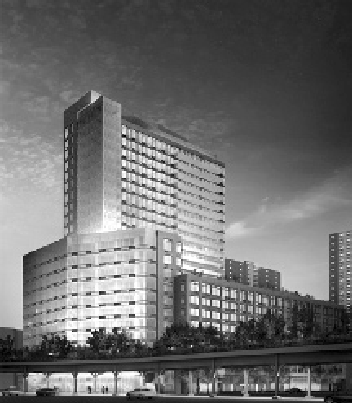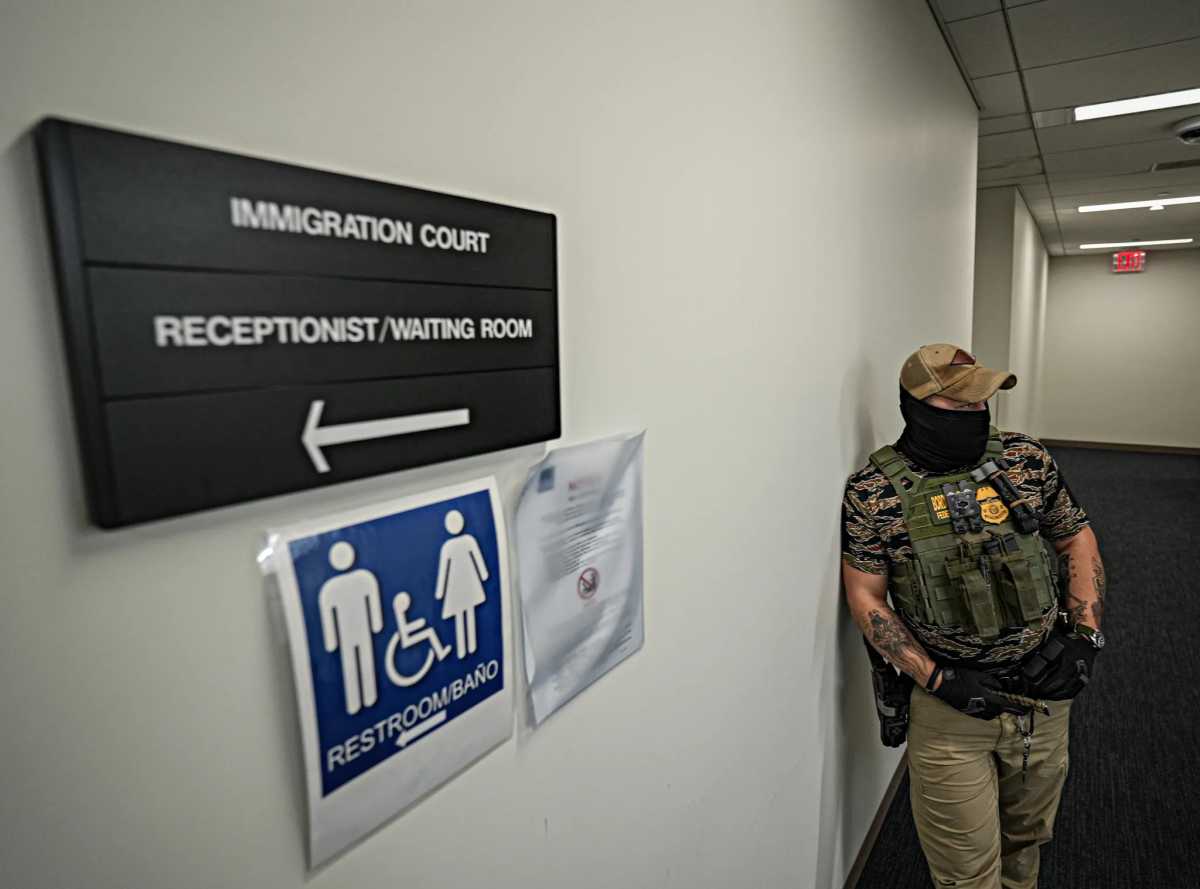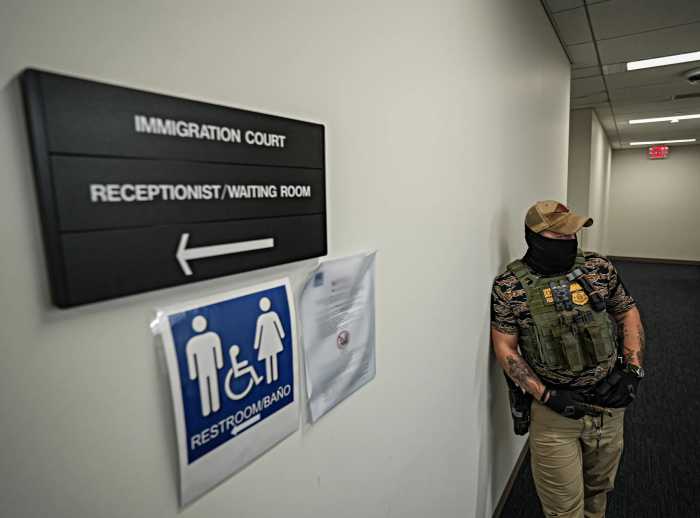By Lawrence Lerner
The Caledonia promises to be a Zen oasis for the upscale clientele buying into its High Line views and promises of luxe-condo serenity. A project of mega-developer The Related Companies, the 24-story, glass-and-brick structure abutting the future elevated rail park will feature a lobby waterfall and 478 units with touches like bamboo floors throughout designed by the artist known as Clodagh, as well as a meditation garden, sun deck, pet spa, children’s playroom, Equinox gym and spa, library and indoor parking.
But the Caledonia — at 450 W. 17th St. between Ninth and 10th Aves. — is slated to have one other feature not usually associated with luxury condo projects: Twenty percent of the units will be set aside as permanent affordable rental housing. This twist comes compliments of New York City’s 80/20 tax-incentive program and the Inclusionary Housing Program, which increasingly are being used by developers in several recently rezoned areas of the city to create affordable housing, including West Chelsea.
Recently, however, Related has come under scrutiny by Community Board 4 for potential violations of inclusionary zoning laws in its Caledonia plan. On Nov. 1, C.B. 4’s full board approved a letter by the board’s Affordable Housing Task Force asking the Department of Housing Preservation and Development to examine whether the developer is creating segregated conditions rather than the integrated housing that both programs call for.
“Regardless of whether H.P.D.’s lawyers do anything about this, it’s our job to raise concerns and watch over this process,” said Joe Restuccia, chairperson of the C.B. 4 Affordable Housing Task Force. “The private sector usually finds ways around new zoning laws. It’s up to the public sector to say, ‘Hey, that’s not O.K.’”
The task force raises four concerns in the letter, which was e-mailed to H.P.D. last Wednesday. The first is whether the Caledonia is either two separate buildings or one building with separate entrances, both of which violate the spirit and letter of inclusionary zoning regulations. The second is whether Related is building separate electric, gas, sprinkler and heating systems for the rental and condo portions of the project. The community board also wants to know whether rental tenants will be able to access all amenities. And, finally, the board asks whether Related has created separate legal structures for the Caledonia — in effect, creating distinct ownership entities for the rental and condo portions of the project.
The task force’s concerns first surfaced in mid-October, when H.P.D. presented the details of the Caledonia plan to the community board and indicated that Related proposed to confine all 59 of its 80/20 units to the first eight floors of the building — which would be dedicated to market-rate and affordable rentals — while leaving the upper floors solely for market-rate condominiums.
“The 80/20 program and the Inclusionary Housing Program require that affordable units be distributed throughout a building, not limited to the rental portion,” said Restuccia.
On Tuesday night Nov. 14 — six days after C.B. 4’s letter with questions about the Caledonia was e-mailed to H.P.D. — an H.P.D. spokesperson said the agency had not yet received it and so couldn’t respond.
“H.P.D. has not yet received the letter from Community Board 4. Therefore, we cannot…comment,” said Amanda Pitman, a department spokesperson.
Alicia Goldstein, Related’s vice president of marketing and communications, said the developer has been working closely with H.P.D. Speaking on Nov. 2, she said the letter had not come to Related, so she didn’t know its content. But she said a team from Related had just spoken to H.P.D. that morning about the project and had “addressed a couple of questions.”
“Related has been a pioneer in these kind of programs,” she said of affordable housing. “We’ve actually usually been praised for our efforts in this area. We’re communicating with H.P.D. and the community board. We’re very forthright about this. There’s really nothing more to address.”
She said if C.B. 4 would like another presentation of the project, Related would be happy to oblige. If the board has questions, “They should come to us,” Goldstein said.
Goldstein wouldn’t address the questions raised in the letter, however, for example, declining to answer if all the building’s tenants will be able to use the sundeck, meditation garden and pet spa. However, according to a source, the building will have only one entrance for all the residents to use.
The 80/20 program provides tax-exempt financing for developers who provide at least 20 percent of their apartments to low-income households. By opting into the program, developers are automatically eligible for the city’s 421A property tax exemption, as well as federal low-income tax credits. Both the city’s Housing Development Corporation and the State Housing Finance Agency issue bonds for such projects, whose affordable apartments remain rent-stabilized for the duration of the developer’s mortgage — usually between 15 and 30 years — before becoming market rate.
The program has been successful in neighborhoods and boroughs where market rents or sales are high enough to subsidize the low-income development.
Throughout the city, developers can use 80/20 tax incentives and other public-subsidy programs in conjunction with the city’s Inclusionary Housing Program, which provides a zoning bonus to developers in return for constructing, rehabilitating or preserving permanent affordable housing. For each square foot of lower-income housing provided, a development is eligible for 1.25 square feet of bonus floor area, up to the maximum floor area ratio (F.A.R.) permitted by applicable zoning regulations.
Once a developer makes its 80/20 units affordable in perpetuity through the Inclusionary Housing Program, it can use the bonus to build extra market-rate units on site, or transfer or sell the bonus floor area off site to a development within the same community district — or to a site in an adjacent community, as long as it is within a half-mile of the site receiving the bonus.
The West Chelsea and Hudson Yards Plans, however, stipulate that off-site bonuses be used only within each of those respective districts or within Community Board 4. The Caledonia occupies a special zoning sub-area within the West Chelsea District that abuts the High Line and, therefore, has height caps. Consequently, this project is not eligible to use the inclusionary housing bonus on site to build higher, but the bonus can be transferred off site or sold to another party.
Restuccia said Community Board 4 will be watching closely as Related transfers its Caledonia development rights, since “this represents the first time a West Chelsea development is using the inclusionary housing bonus off site.”
To help in its efforts, the board is currently setting up a system to track new residential development within the West Chelsea and Hudson Yards districts. Part of the goal is to monitor the development of affordable housing and to gauge how those new affordable units are being distributed within each applicable development project.
The Caledonia is the first such development in the West Chelsea District to opt into the Inclusionary Housing Program.
“It is also the first in the district to use I.H.P. in conjunction with the 80/20 program,” said Amanda Pitman, an H.P.D. spokesperson.
By allowing developers to combine these programs, the city hopes to take advantage of the hot housing market and spur the creation of permanent affordable housing not just in Manhattan but throughout the city.
According to Pitman, a total of five inclusionary housing developments are underway in C.B. 4, two of them in West Chelsea. In addition to the Caledonia, there is a rental property at 316 11th Ave. being developed by Douglaston Realty Corp. that is in its preliminary stages. That project is also using I.H.P. in conjunction with the 80/20 program, she said.






























